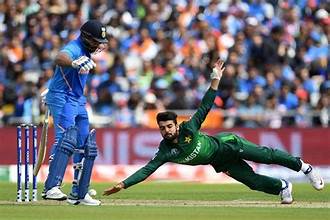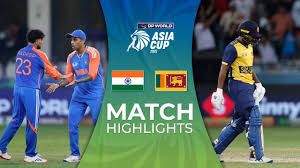Pak vs India, Asia Cup 2025 (T20): Match overview & highlights
There’s nothing quite like India vs Pakistan under lights in Dubai. The stadium is a bowl of noise, flags ripple in opposite corners, and every dot ball feels like a plot twist. This year’s Asia Cup is a T20 edition, and the first blockbuster of Group A is set at the Dubai International Cricket Stadium on Sunday, September 14—6:30 pm local (Dubai), 7:30 pm Pakistan time, 8:00 pm India time At Smartcric.
Both sides arrive with a win in their pockets and very different tones around them. Pakistan brushed aside Oman by 93 runs, a performance that came with a bit of public oomph from captain Agha Salman, who spoke with edge about being ready for the big one. India, for their part, thumped UAE by nine wickets, clinical and icy. The table is set; the appetiser was tasty; now for the main course.
The mood and the bigger picture
Strip away the noise and it’s still a group game, but it never feels that way. The rivalry lives outside the boundary: ticket scrambles, TV debates, even politics elbowing in. This week has seen as much off-field chatter as on, a reminder that these matches carry weight far beyond two points. Yet once the toss happens, the players shrink the world to 22 yards. That’s always been the spell of this fixture.

From a cricket lens, the meeting comes at a telling time for both sides. India look like a team that has swapped star aura for systems: role clarity in the top three, layers of seam at the death, and a willingness to squeeze the middle overs with spin. Pakistan, after months of searching, have leaned back into familiar strengths: pace that can win in bursts, left-hand hitting options to break patterns, and a captain who’s comfortable turning the game scrappy when needed.
Venue, conditions, and what they mean
Dubai in September is unforgiving. The surface typically starts true and quickens just enough for new-ball movement before flattening, which is why teams often debate batting first to bank runs on a fresh pitch. Dew can play but isn’t guaranteed; seamers who hit the deck and vary pace late are usually the difference. The average first-innings T20 score here hovers around the mid-140s to 150s; the best sides find 165 without doing handstands. Expect pace to take more wickets than spin early, then the middle overs to swing on how cleverly the wrist-spinners are used.
Selection snapshots—who’s shaping the XI
If you skim the teamsheets this week, one theme jumps out: a newer-look India and a recalibrated Pakistan, each with a few stars you didn’t grow up associating with this rivalry. For India, Suryakumar Yadav wearing the armband changes the energy in the middle overs, and the presence of Jasprit Bumrah and Kuldeep Yadav gives them control at both ends of the innings. Shubman Gill remains the tone-setter at the top. Pakistan’s sheet shines in pace: Shaheen Shah Afridi is the lightning rod, with Haris Rauf the late-over wildcard. Up front with the bat, Fakhar Zaman and Saim Ayub bring left-hand leverage, while Agha Salman provides glue and off-spin. (Squads and captaincy as listed by tournament pages.)
Five battles that could decide it
1) Bumrah v Shaheen: the new-ball commandments
Bumrah’s first six balls to a left-hander tend to be an exam in angles; Shaheen’s first over to a right-hander is a threat letter aimed at the front pad. The side that wins those two mini-contests often controls the Powerplay. Pakistan will want Bumrah driven on the up; India will want Shaheen dragged across the line.
2) Kuldeep’s middle-over maze v Pakistan’s lefties
Pakistan’s plan against wrist-spin is usually to refuse dot-ball pressure—sweep, lap, or step across to force field changes. Kuldeep doesn’t mind being hit early if it buys him a wicket chance later. The quieter 7–10 window matters more than the highlight-reel over.
3) India’s batters at the death v Rauf’s variations
On dry evenings in Dubai, slower balls grip just enough. Rauf’s cutters into the pitch versus India’s range hitters—Hardik Pandya, Suryakumar—is a chess match about pace off and hitting zones behind square.
4) Pakistan’s middle-order method v India’s match-ups
If Pakistan are 70–2 after 10, Agha Salman will want to push the game to 140+ without losing shape. India’s answer is often a two-over squeeze that forces a high-risk shot. That squeeze—Axar/Kuldeep one end, Bumrah holding overs—can flip momentum without a wicket.
5) Fielding margins
These nights are won by the third run, the direct hit from extra cover, the relay parry over the rope that saves four. Historically, India carry a slight edge here; Pakistan closed the gap in the Oman game with cleaner ground work and braver catching. Keep an eye on that.
What counts as a “par” start?
For Pakistan with the bat: 45–50 without losing both openers is gold. It gives Shaheen and Haris something to bowl at later without needing miracles. For India batting first: one set top-three batter into the 14th over, strike-rotating while targeting one bowler—usually over No. 9 or 10—is the template. Anything north of 160 forces false shots against Bumrah at the death.
Highlights to watch for (the moments everyone will talk about)
The first over to Gill: If Shaheen swings it late, Gill’s trigger step becomes a subplot—does he cover the inswinger or ride the bounce?
India’s spin choke: A two-over stretch from overs 8–12 where Pakistan score under a run-a-ball; the camera pans to a thoughtful Salman, then a calculated release shot.
Hardik’s cameo tax: Even a 20 (10) with two sixes can swing win probability by double digits at Dubai. Watch his match-up against pace-off.
Rauf’s 18th over: When he nails the hard-length slower ball, it looks hittable but doesn’t arrive. Miss once, and Suryakumar turns it into a ramp tutorial.
One extraordinary catch: There is always one—over the shoulder at long-off, a fingertip dive at deep midwicket, or a short-third reflex grab that changes everything.
These are the beats that form the post-game montage, the tiny choices that become folklore.
Why this clash feels different in 2025
In previous cycles, both camps leaned heavily on one or two megastars. In 2025, the rivalry is shaped more by systems and match-ups. India have embraced modular roles (floaters, two-spinner middle, three death options). Pakistan have rediscovered the ok-we-fight identity: they may lose a phase, but they make you beat them twice. That’s why the Oman win mattered; it wasn’t the opposition, it was the method—batting intent early, seamers hunting in pairs, and the captain’s willingness to risk a field for a wicket. It read like a plan they believe in.
The stakes (beyond bragging rights)
Yes, two points. But also seeding for the Super Four, rhythm for the knockout week, and—quietly—the power to shape selections for the next twelve months. Win here and a team tends to double down on its template; lose, and the tinkering begins. That’s why coaches speak about “process over outcome” while picking XIs that reveal their nerves.
If you’re watching from Pakistan
You’ll treat this like an Eid evening with cricket. PTV Sports and regional broadcasters are carrying the game; if you’re streaming, check your local listings (and bandwidth) early because spikes are real during this fixture. For many, the ritual is simple: chai, friends, a sofa that turns into a jumping castle when Shaheen gets that in-ducker right. (Multiple broadcasters in India and abroad are confirmed for this fixture.
A simple cheat-sheet before first ball
Toss: Win and consider batting if the surface looks hard; chase only if you truly trust your death bowling. Dubai’s average first-innings score leaves room for a defend.
Powerplay target: 45+ with one down is a win on most nights here.
Middle overs: This is where Kuldeep (IND) and the Nawaz/part-time mix (PAK) will try to cash in. Control the dot-ball rate; don’t chase boundaries out of ego.
Death overs: India lean on Bumrah + one of Arshdeep/Hardik; Pakistan lean on Rauf + Shaheen. Treat the first four balls of over 19 like a bank account—withdraw only if you’ve deposited earlier.
Fielding: Expect both sides to place a premium on the ring; singles prevention is the quietest ten runs you save.
Final word
What makes India–Pakistan nights special isn’t just the scoreboard. It’s the feeling that every little thing matters—a misfield, a mis-read, a captain’s hunch. The rivalry has matured into something less about personalities and more about pressure management. Whoever holds nerve at the bookends (overs 1–3 and 18–20) will walk off to the louder stand.



